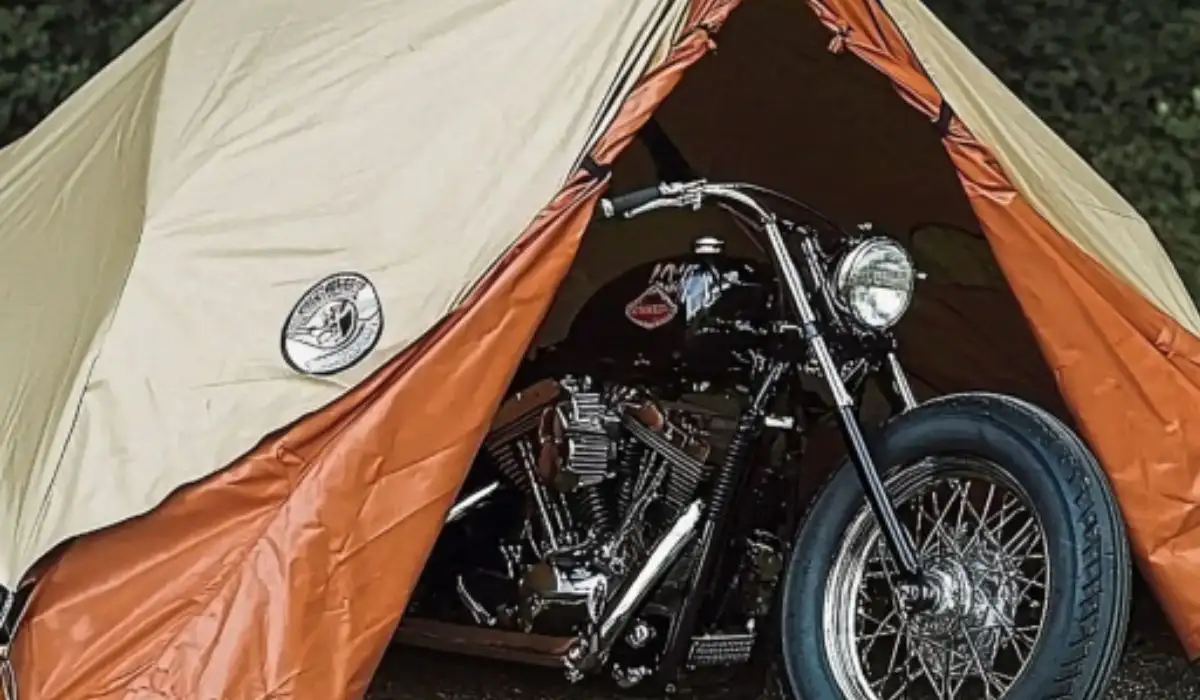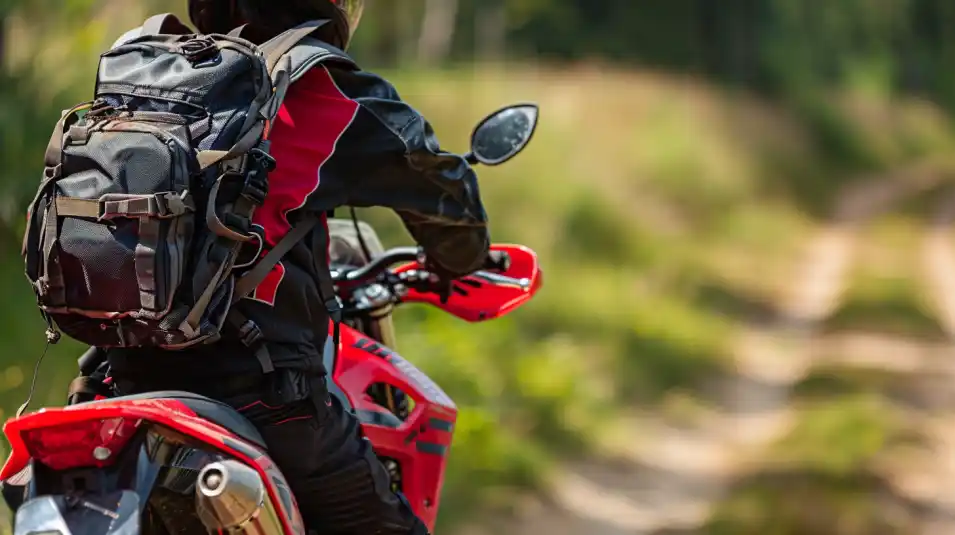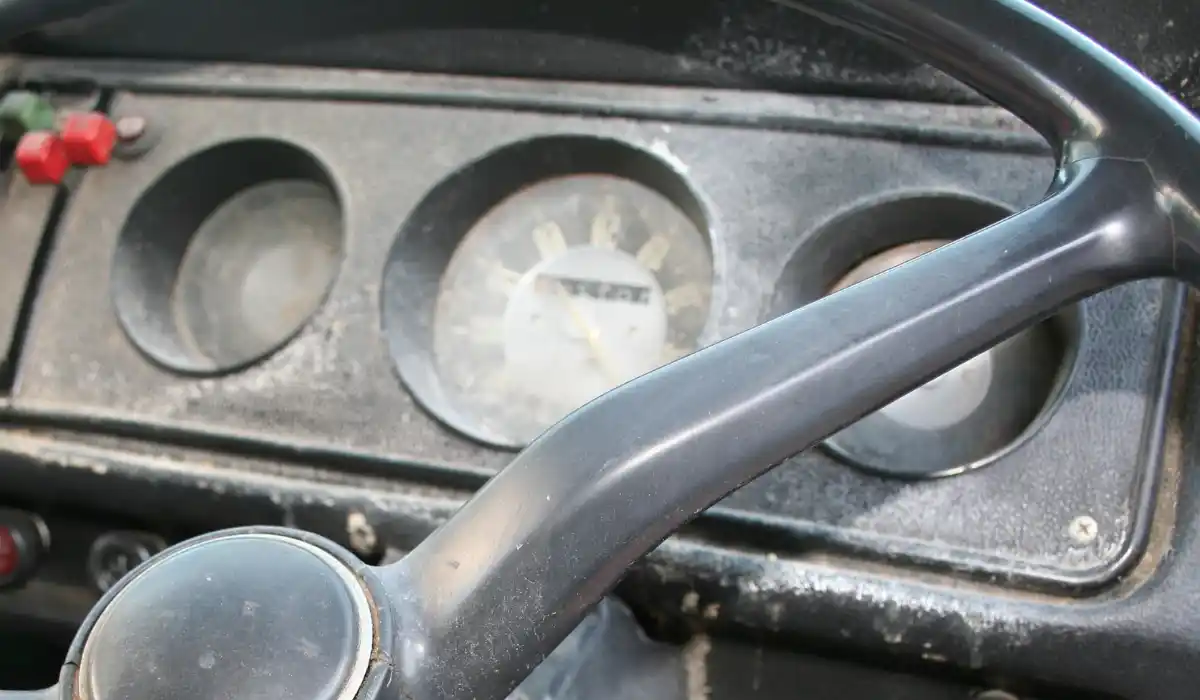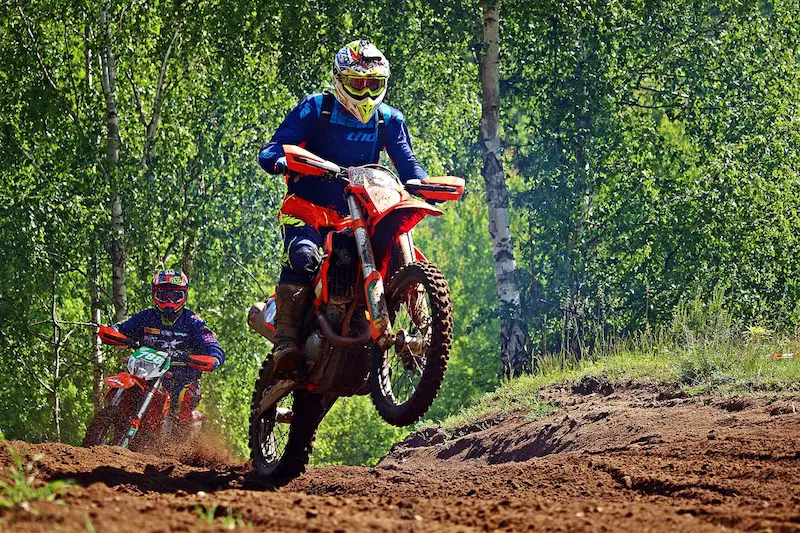
When you’re first getting started, riding a dirt bike might seem daunting and dangerous. There’s a lot to learn as a beginner and you could probably use all the help you can get.
Here at R&R we cover a lot of dirt bike topics, most of which are aimed towards beginner riders. In this post we put together a helpful list of the best dirt bike tips for beginners.
These should help you become more comfortable with riding a dirt bike. even if you’ve been riding for a little while, you’re bound to find some useful advice in this post.
Feel free to share any of your own helpful dirt biking tips in the comments below. Otherwise, let’s jump right into it!
Jump Ahead To:
The Best Dirt Bike Tips and Tricks For Beginner Riders
1. Take a Motorcycle Safety Course
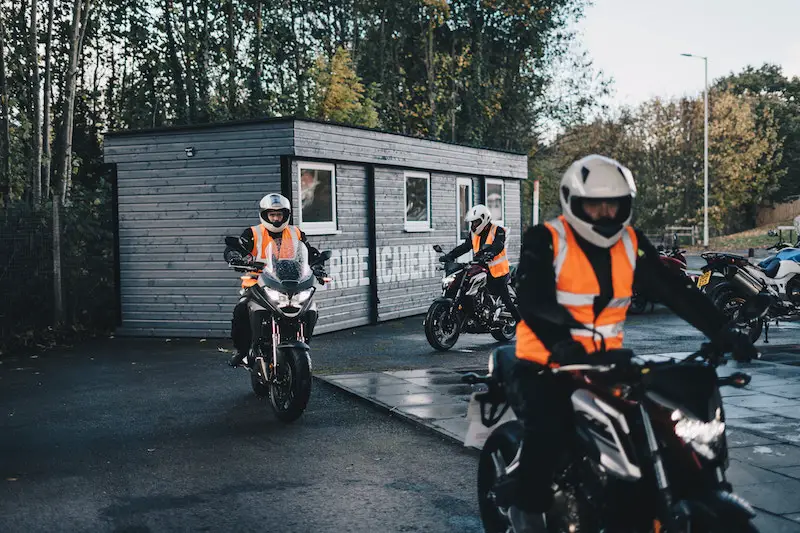
Unless you’ve been riding since you were young, it’s always a good idea to get started with a motorcycle safety course. These are courses that teach you the basics of motorcycle safety as well as how to ride.
In many places these courses will give you a better motorcycle insurance rate. They’re also helpful for completely new riders to start becoming familiar with riding.
You might be thinking that as a dirt bike rider it’s not necessary for you to take a motorcycle safety course. This couldn’t be further from the truth.
These courses help build confidence for new riders. You’re able to get the feel for how bikes work without having to practice on your own bike.
After completing a course it’s likely that you’ll be eligible for the next class of motorcycle license. This means you can start riding even sooner, whether you’re playing to ride on the street or off-road.
Along with the basic motorcycle safety courses, there are also dirt bike and off road courses available. It’s a good idea to consider taking one of these as well, especially if you don’t have any experience with off-road riding.
2. Practice the Controls With the Bike Off

Before immediately heading out the first time you get on a bike, it’s a good idea to start by getting familiar with the controls. Start by taking 5-10 minutes shifting through the gears with the bike off.
Learn where neutral is and how to get to it easily. Get a feel for where the foot brake is and how much pressure needs to be applied for it to start working.
Go through the process of using the clutch until you’re comfortable with how it works. Become familiar with everything on the dashboard and control panel so that you’re not confused when you head out for the first time.
Practicing all of these controls will give you more confidence once you’re ready to start riding. This way, you’re less likely to make a serious mistake if something goes wrong while you’re on the bike.
3. Wear All the Safety Gear

Dirt bike safety gear, such as a helmet, boots, gloves, jacket, and pants, are what’s going to protect you in the case of a crash or accident. Without the right gear you’re rolling the dice at the risk of getting seriously injured.
The most important pieces of gear are the helmet, gloves, and boots. This is what’s needed if you’ll be riding off-road.
For street riding, or riding in busier areas, a jacket and motorcycle pants will be useful. These items will protect you from road rash and high-speed impacts.
Too many new riders cheap out on the dirt bike safety gear they’re riding with. This is a bad idea and can do more harm than good.
Cheaper, lower quality gear doesn’t offer ample protection and typically isn’t as durable as higher quality gear. Your personal health and safety is not something you want to take a chance with when you’re out riding.
Start with buying a quality dirt bike helmet, dirt bike boots, and dirt bike gloves. These are the most important when you’re first starting out.
A quality helmet will protect your head and neck from any crashes or impacts. Without a helmet you’re more likely to get injured, or even die, if something happens when you’re on the bike.
Next, good boots also need to be invested in. Considering that the majority of broken bones received while dirt biking half and below the waist, a quality set of boots is worth the investment.
Check out our helpful buying guides listed below if you’re having trouble deciding on the right dirt bike gear:
4. Focus on Learning How to Clutch

If you’re new to motorcycles, you’ll have to focus on learning to clutch. The clutch is used every time you want to change gears or put the bike in neutral.
As a new rider, the clutch can seem daunting and difficult. With enough practice it will become second nature and eventually you’ll stop thinking about it.
Until that happens, it’s a good idea to focus as much as possible on using the clutch properly. When it comes to riding a dirt bike, it’s all about timing, especially when you’re changing gears.
Along with changing gears, the clutch can be used for slowing down the bike if you’re entering a turn too quickly. It’s also necessary for tight, slow speed maneuvers if you’re riding in tight spaces.
It’s going to seem difficult and sometimes scary when you’re first learning how to use the clutch on a dirt bike. Give it enough time and practice and you’ll eventually be shifting gears and using the clutch without even thinking about it.
5. Start on a Dirt Road

The best place to learn how to ride your dirt bike is on an old dirt road. This is after you’ve gone through a motorcycle safety course or dirt bike training course.
The problem with immediately heading off-road or practicing on the street is the unpredictability in these settings. If something goes wrong, you’re likely to panic. This can have dangerous consequences on the street or off road.
The best place to start learning is on an old dirt road far away from other people and traffic. This is where you can start practicing clutch control and changing gears without any dangerous obstacles.
Try to find somewhere where you can take your time without much traffic driving by. Start by riding in a straight line and getting a feel for the clutch, braking, and low speed turns.
Once you’re more comfortable, don’t be afraid to speed up a little and get a better feel for the bike. Eventually you’ll be able to take it on the road or further into off-road conditions without being as nervous from your lack of skill.
Don’t forget to try out riding in an area with hills if you can. Hills introduced a different dynamic when it comes to starting your dirt bike and using the clutch to get going.
6. Practice Loading and Unloading Your Bike

Many of you will be getting a dirt bike specifically for riding on trails and off road. In this case, you’ll have to use a trailer or truck for transporting your bike.
Before going anywhere, practice loading and unloading your bike. You wouldn’t want to get somewhere and not be able to unload or load the bike just because you’re not sure how.
After loading the bike for the first time, get some practice with proper securement. This means using motorcycle straps for securing the bike in place while you’re driving.
As for loading into the back of a truck, it’s a good idea to use a dirt bike ramp. This makes the loading process even easier and something you could do on your own.
Figure out the system for you that works that makes loading and unloading simple. If not, you’re not going to have a good time during this process, and you’ll be less likely to take the bike and go riding.
7. Properly Maintain Your Dirt Bike
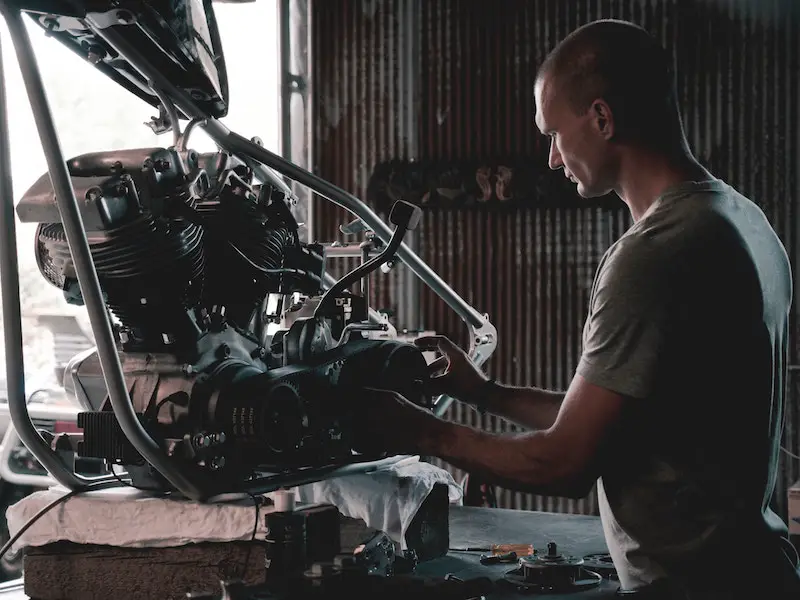
If you want to keep your bike running problem-free it’s important to properly maintain it. This means taking the time to regularly perform basic dirt bike maintenance.
As a new rider, you might be intimidated or unsure how to maintain your dirt bike. Thankfully, there are plenty of guides online and on YouTube that will cover anything you need to know.
Here are some of the five basic dirt bike maintenance tips for new riders to keep in mind. Don’t forget to check your owner’s manual for the recommended maintenance schedule.
- Change the oil. Most dirt bikes require an oil change every 8 to 10 hours of riding. Thankfully, this is easy to do, even for beginners. Undo the drain bolt, drain out the old oil, add new oil – that’s it!
- Check the tire pressure. Pick up a digital tire pressure gauge and regularly check your dirt bike tires. Make sure they have enough pressure for riding on, generally 15 PSI or less. Low pressure can affect your grip on the trails and damage the tires over time.
- Clean the air filter. It’s important to regularly clean the air filter, especially if you’re riding in dusty and dirty conditions. Start by removing the air filter, washing it out, coating it lightly with oil, and putting it back in the bike.
- Use a trickle charger for your battery. When you’re not using the bike for an extended period, such as over the winter, connect your dirt bike battery to a trickle charger. This will keep it charged and in good condition until you’re ready to start riding again.
- Keep the chain lubricated. Having a well lubricated dirt bike chain can extend its lifespan. It will also keep the sprockets in good condition and provide a smoother ride. Pick up a few cans of the best motorcycle chain lube so that you always have some available.
It’s not difficult to maintain a dirt bike. Taking the time to perform regular maintenance will help keep your bike running in tip-top shape.
Learning how to do your own maintenance will also save you money. You won’t have to visit the mechanic as often and you’ll be learning a new skill at the same time.
8. Start on a Smaller Dirt Bike

Getting started on a bigger dirt bike, such as a 400cc or larger, is a recipe for disaster. These bikes are too powerful and scary for beginners.
Even experienced riders start on, and continue, riding a smaller bike. Dirt bikes in the 250cc range are the easiest to ride in control, especially when you’re getting into technical riding conditions.
Not only do bigger bikes have too much power for beginners, they also tend to be much heavier. This makes them harder to control, which will tire you out, and make it more likely for you to lose your balance.
Dropping the bike isn’t a big deal. It’s how you’re going to lift up a heavier bike that you need to consider. Depending on the conditions you’re riding in it might be impossible for you to lift up a bigger bike on your own.
Finally, smaller bikes are more affordable to buy and cheaper to maintain in the long run. Even with a 250cc dirt bike, you’re still going to have loads of fun when you’re off road or riding singletrack.
- Related: The Best Dirt Bikes For Beginners
9. Practice Standing While Riding
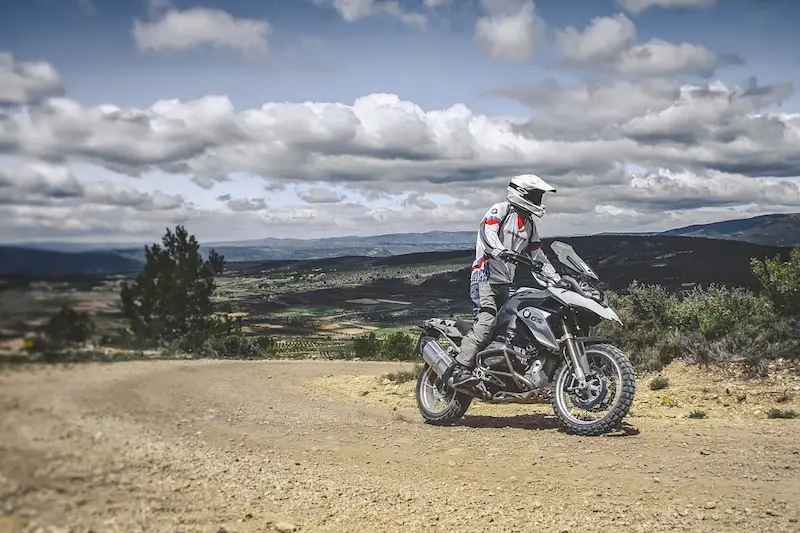
When you’re first starting out you’ll probably feel more comfortable riding while seated. However, learning to ride in a neutral standing position will exponentially improve your riding.
This position is known as the attack position. It’s where your body weight is located centrally on the bike with your knees slightly bent, head up, and elbows raised and in line with your wrists.
Your hands are gripping the bike with a light pressure. It’s your knees that are gripping the tank and keeping you properly positioned upright.
In this position you have better control of the bike and can more quickly react to the conditions in front of you. This helps you avoid any injuries or potential crashes due to logs, rocks, or other hazards.
Standing is also a good idea for stretching your legs and back. This can help you keep going on longer rides and avoid any cramping or riding pain.
10. Don’t Turn Off the Bike With the Kill Switch
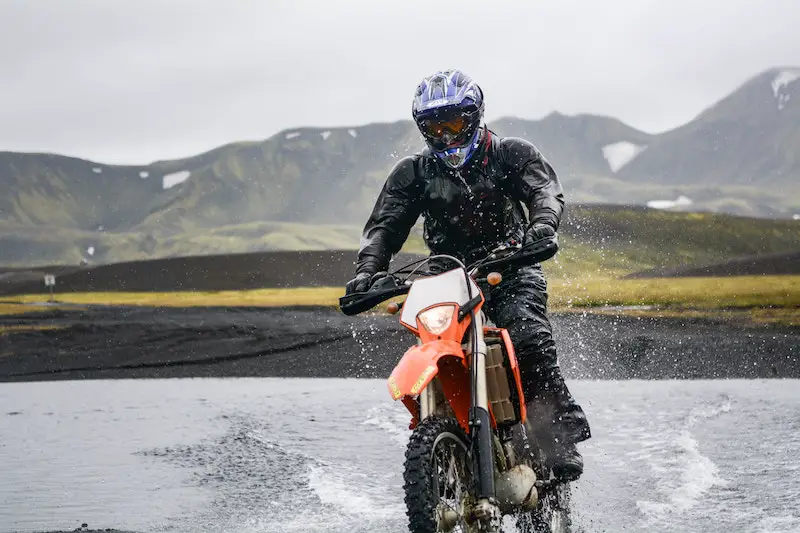
A common mistake that new riders make is turning off the bike using the kill switch. The problem with this is that the battery stays on, especially if you forget to turn the key to the off position.
With the battery on and bike turned off, it’s possible for the battery to be run dead. You’ll unfortunately discover your mistake the next time you’re ready to start riding.
Get in the habit of turning off your dirt bike using the key. Switch the key to the off position and remove it whenever you’re not riding.
The kill switch should only be used in an emergency. For example, if you drop the bike while it’s still on or get into a crash.

